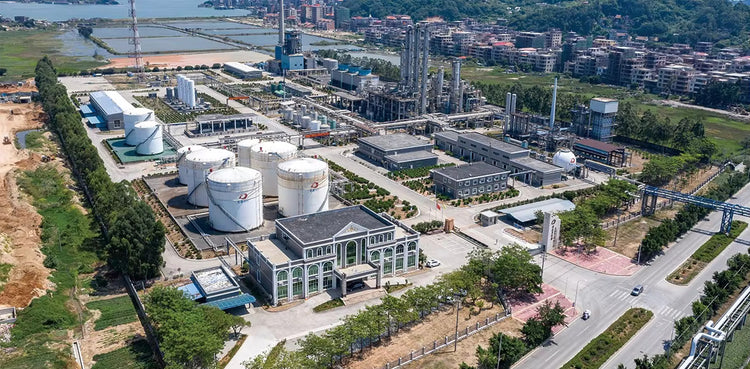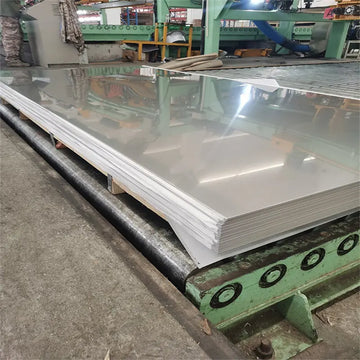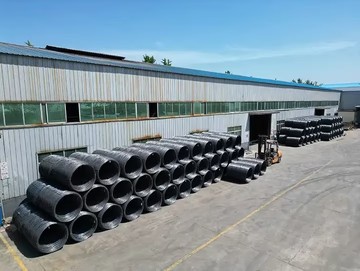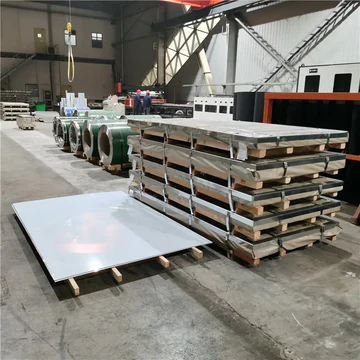
20 YEARS EXPERIENCE
There are more than 30 products to choose from
to meet your every need.
Products Description
Introduction
In today's fast-paced global market, stainless steel products have become increasingly popular for their durability, corrosion resistance, and aesthetic appeal. One innovative range that has emerged in recent years is stainless steel deep processing, offering a wide array of unique features and applications.
Stainless Steel Deep Processing - What is It?

Stainless steel deep processing involves a series of advanced manufacturing processes designed to enhance the properties and characteristics of stainless steel, thereby improving its functionality and versatility. This process typically involves specialized techniques such as heat treatment, surface treatments, and post-processing methods tailored to meet specific requirements or demands.
Key Characteristics of Stainless Steel Deep Processing

- Enhanced Durability Through deep processing, stainless steel gains enhanced resistance to wear, fatigue, and impact, making it more durable under harsh environmental conditions.
- Improved Corrosion Resistance Some deep processing methods can significantly improve the corrosion resistance of stainless steel, making it suitable for marine, outdoor, and high-wear environments.
- Increased Surface Toughness By controlling the microstructure through heat treatment, deep processing can lead to increased surface toughness, enabling better protection against scratches and impacts.
- Customized Properties Customizable deep processing options allow for the development of materials with customized properties, meeting specific technical requirements or end-user needs.
Advantages of Deep Processing
The benefits of stainless steel deep processing extend beyond improved performance; it also opens up new markets and opportunities for innovation. Here are some key advantages
- Tailored Solutions Deep processing enables manufacturers to tailor products specifically to the customer's needs, resulting in cost-effective solutions.
- Versatility The flexibility offered by deep processing allows for a wide range of applications across different industries, including construction, automotive, and medical equipment.
- Environmentally Friendly Many deep processing methods are environmentally friendly, reducing waste and minimizing energy consumption compared to traditional manufacturing methods.
Case Study Application in Marine Engineering
One notable application of deep processing in marine engineering is the use of AISI 304L stainless steel. The case study below demonstrates how this process enhances the durability and corrosion resistance of these materials, crucial qualities for maritime vessels and offshore structures.
"AISI 304L Stainless Steel Deep Processing – Tailoring Strength and Corrosion Resistance for Maritime Vessels"
Content
In today’s maritime industry, stringent standards require that steel components withstand harsh environments and aggressive weather conditions without compromising safety or aesthetics. This necessitates the adoption of robust, custom-designed deep processing solutions.
The AISI 304L stainless steel used in marine applications requires both enhanced corrosion resistance and structural integrity. Deep processing offers a comprehensive solution by
- Heat Treatment The initial stage of deep processing involves heating the steel to a specific temperature to control the phase transformation, which leads to an improvement in the material’s mechanical properties, including hardness and ductility.
- Surface Treatments Following heat treatment, additional treatments like passivation, nitriding, or phosphatizing can further enhance corrosion resistance by forming a protective oxide layer on the surface.
By implementing these deep processing steps, AISI 304L stainless steel becomes an ideal choice for maritime vessels and other marine applications, ensuring longevity and resilience against the elements.
For instance, consider the design of a shipyard crane, where the steel frame must withstand extreme stress during operation while maintaining structural integrity. A custom-designed AISI 304L stainless steel deep processed to a state-of-the-art surface finish would provide the required balance between strength and corrosion resistance, making it ideal for marine environments.
Benefits of Deep Processing in Marine Engineering
- Enhanced Durability With deeper processing, stainless steel becomes more resistant to wear and corrosion, leading to longer service life and reduced maintenance costs.
- Improved Safety High-stress environments demand robust materials capable of withstanding shock loads, fatigue fractures, and chemical exposure. Deep processing provides this critical property.
- Cost-Effectiveness Customized deep processing reduces the need for extensive customization, lowering overall production costs.
- Environmental Sustainability Modern deep processing technologies often incorporate eco-friendly practices, minimizing the environmental footprint of marine infrastructure.
Conclusion
As technology continues to evolve, so does the scope for deep processing in stainless steel. Its ability to customize properties and tailor solutions makes it an indispensable tool for companies looking to innovate and excel in the global marketplace. By leveraging deep processing, manufacturers can create a competitive edge in various sectors, pushing the boundaries of what is possible in terms of functionality and aesthetics.
Questions and Answers
Q How does deep processing differ from standard manufacturing methods?
A Deep processing differs in its focus on enhancing the mechanical properties and corrosion resistance of stainless steel. Traditional manufacturing methods primarily aim for uniformity and efficiency, whereas deep processing aims to optimize the material's performance for specific applications.
Q Can deep processing be applied to non-metallic materials?
A While deep processing is commonly associated with metals, it can be extended to non-metallic materials such as ceramics and composites. However, the specific approach and depth vary depending on the material and application.
This comprehensive guide to stainless steel deep processing serves as a primer on understanding the benefits, challenges, and potential uses of this advanced manufacturing technique. As technology advances, so will the opportunities for customization and innovation within the realm of stainless steel and deep processing. Stay tuned for updates on the latest trends and developments in this dynamic field.
End of Output
COMPANY PROFILE

OMPANY PROFILE
More+OUR ADVANTAGE
 QUALITY CERTIFICATES
QUALITY CERTIFICATES QUALITY CERTIFICATES
QUALITY CERTIFICATES QUALITY CERTIFICATES
QUALITY CERTIFICATES OEM/ODM SUPPORT
OEM/ODM SUPPORT QUALITY CERTIFICATES
QUALITY CERTIFICATES 18 YEARS EXPORT
18 YEARS EXPORTPACKAGING LOGISTICS

 Truck
Truck Sea Freight
Sea Freight Ari Freight
Ari Freight
Hot Tags:




